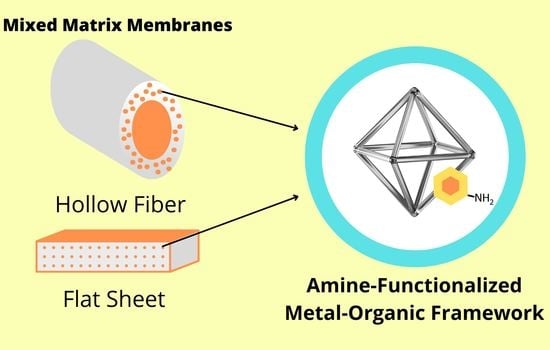Development of Amine-Functionalized Metal-Organic Frameworks Hollow Fiber Mixed Matrix Membranes for CO2 and CH4 Separation: A Review
Abstract
:1. Introduction
2. Separation Mechanisms of Hollow Fiber Mixed Matrix Membranes
3. Metal-Organic Framework Fillers
4. Amine-Functionalized Metal-Organic Frameworks Fillers
5. Amine-Functionalized Metal-Organic Frameworks Flat Sheet Mixed Matrix Membranes
6. Amine-Functionalized Metal-Organic Frameworks Hollow Fiber Mixed Matrix Membranes
6.1. Hollow Fiber Mixed Matrix Membranes
6.2. Casting on PEBAX Thin Selective Layer
7. Challenges in Development of Amine-Functionalized Metal-Organic Frameworks (MOFs) Hollow Fiber Mixed Matrix Membranes
7.1. Polymer-Filler Interfacial Incompatibility
7.2. Agglomeration of Fillers
7.3. Plasticization
8. Conclusions and Future Directions
Author Contributions
Funding
Informed Consent Statement
Acknowledgments
Conflicts of Interest
References
- Jusoh, N.; Yeong, Y.F.; Lau, K.K.; Shariff, A.M. Fabrication of silanated zeolite T/6FDA-durene composite membranes for CO2/CH4 separation. J. Clean. Prod. 2017, 166, 1043–1058. [Google Scholar] [CrossRef]
- Basu, S.; Odena, A.; Vankelecom, I.F. MOF-containing mixed-matrix membranes for CO2/CH4 and CO2/N2 binary gas mixture separations. Sep. Purif. Technol. 2011, 81, 31–40. [Google Scholar] [CrossRef]
- Perez, E.V.; Kalaw, G.J.; Ferraris, J.P.; Balkus, K.J.; Musselman, I.H. Amine-functionalized (Al) MIL-53/VTEC™ mixed-matrix membranes for H2/CO2 mixture separations at high pressure and high temperature. J. Membr. Sci. 2017, 530, 201–212. [Google Scholar] [CrossRef] [Green Version]
- Ahmed, S.; Ramli, A.; Yusup, S. CO2 adsorption study on primary, secondary and tertiary amine functionalized Si-MCM-41. Int. J. Greenh. Gas Control 2016, 51, 230–238. [Google Scholar] [CrossRef]
- Peters, L.; Hussain, A.; Follmann, M.; Melin, T.; Hägg, M.-B. CO2 removal from natural gas by employing amine absorption and membrane technology—A technical and economical analysis. Chem. Eng. J. 2011, 172, 952–960. [Google Scholar] [CrossRef]
- Carreon, M.A. Molecular sieve membranes for N2/CH4 separation. J. Mater. Res. 2018, 33, 32–43. [Google Scholar] [CrossRef] [Green Version]
- Zhang, Y.; Sunarso, J.; Liu, S.; Wang, R. Current status and development of membranes for CO2/CH4 separation: A review. Int. J. Greenh. Gas Control. 2013, 12, 84–107. [Google Scholar] [CrossRef]
- Rufford, T.; Smart, S.; Watson, G.; Graham, B.; Boxall, J.; da Costa, J.C.D.; May, E. The removal of CO2 and N2 from natural gas: A review of conventional and emerging process technologies. J. Pet. Sci. Eng. 2012, 94-95, 123–154. [Google Scholar] [CrossRef]
- Zhang, Y.; Feng, X.; Yuan, S.; Zhou, J.; Wang, B. Challenges and recent advances in MOF–polymer composite membranes for gas separation. Inorg. Chem. Front. 2016, 3, 896–909. [Google Scholar] [CrossRef]
- Jusoh, N.; Yeong, Y.F.; Chew, T.L.; Lau, K.K.; Shariff, A.M. Current Development and Challenges of Mixed Matrix Membranes for CO2/CH4 Separation. Sep. Purif. Rev. 2016, 45, 321–344. [Google Scholar] [CrossRef]
- Farnam, M.; Mukhtar, H.; Shariff, A.M. Analysis of the Influence of CMS Variable Percentages on Pure PES Membrane Gas Separation Performance. Procedia Eng. 2016, 148, 1206–1212. [Google Scholar] [CrossRef] [Green Version]
- Mushardt, H.; Müller, M.; Shishatskiy, S.; Wind, J.; Brinkmann, T. Detailed Investigation of Separation Performance of a MMM for Removal of Higher Hydrocarbons under Varying Operating Conditions. Membranes 2016, 6, 16. [Google Scholar] [CrossRef] [PubMed]
- Chen, X.Y.; Vinh-Thang, H.; Rodrigue, D.; Kaliaguine, S. Amine-Functionalized MIL-53 Metal–Organic Framework in Polyimide Mixed Matrix Membranes for CO2/CH4 Separation. Ind. Eng. Chem. Res. 2012, 51, 6895–6906. [Google Scholar] [CrossRef]
- Qiao, Z.; Wang, N.; Jiang, J.; Zhou, J. Design of amine-functionalized metal–organic frameworks for CO2 separation: The more amine, the better? Chem. Commun. 2016, 52, 974–977. [Google Scholar] [CrossRef] [Green Version]
- Zhu, H.; Jie, X.; Cao, Y. Fabrication of Functionalized MOFs Incorporated Mixed Matrix Hollow Fiber Membrane for Gas Separation. J. Chem. 2017, 2017, 1–9. [Google Scholar] [CrossRef]
- Hsieh, J.O.; Balkus, K.J.; Ferraris, J.P.; Musselman, I.H. MIL-53 frameworks in mixed-matrix membranes. Microporous Mesoporous Mater. 2014, 196, 165–174. [Google Scholar] [CrossRef]
- Anjum, M.W.; Bueken, B.; De Vos, D.; Vankelecom, I.F. MIL-125(Ti) based mixed matrix membranes for CO2 separation from CH4 and N2. J. Membr. Sci. 2016, 502, 21–28. [Google Scholar] [CrossRef]
- Ploegmakers, J.; Japip, S.; Nijmeijer, K. Mixed matrix membranes containing MOFs for ethylene/ethane separation Part A: Membrane preparation and characterization. J. Membr. Sci. 2013, 428, 445–453. [Google Scholar] [CrossRef]
- Friebe, S.; Diestel, L.; Knebel, A.; Wollbrink, A.; Caro, J. MOF-Based Mixed-Matrix Membranes in Gas Separation-Mystery and Reality. Chem. Ing. Tech. 2016, 88, 1788–1797. [Google Scholar] [CrossRef]
- Pal, N.; Agarwal, M. Advances in materials process and separation mechanism of the membrane towards hydrogen separation. Int. J. Hydrog. Energy 2021, 46, 27062–27087. [Google Scholar] [CrossRef]
- Galizia, M.; Chi, W.S.; Smith, Z.P.; Merkel, T.C.; Baker, R.W.; Freeman, B.D. 50th Anniversary Perspective: Polymers and Mixed Matrix Membranes for Gas and Vapor Separation: A Review and Prospective Opportunities. Macromolecules 2017, 50, 7809–7843. [Google Scholar] [CrossRef]
- Ismail, A.; Goh, P.; Sanip, S.; Aziz, M. Transport and separation properties of carbon nanotube-mixed matrix membrane. Sep. Purif. Technol. 2009, 70, 12–26. [Google Scholar] [CrossRef]
- Dong, G.; Li, H.; Chen, V. Challenges and opportunities for mixed-matrix membranes for gas separation. J. Mater. Chem. A 2013, 1, 4610–4630. [Google Scholar] [CrossRef]
- Cong, H.; Radosz, M.; Towler, B.F.; Shen, Y. Polymer–inorganic nanocomposite membranes for gas separation. Sep. Purif. Technol. 2007, 55, 281–291. [Google Scholar] [CrossRef]
- Ahmadi, M.; Janakiram, S.; Dai, Z.; Ansaloni, L.; Deng, L. Performance of Mixed Matrix Membranes Containing Porous Two-Dimensional (2D) and Three-Dimensional (3D) Fillers for CO2 Separation: A Review. Membranes 2018, 8, 50. [Google Scholar] [CrossRef] [Green Version]
- Buddin, M.S.; Ahmad, A. A review on metal-organic frameworks as filler in mixed matrix membrane: Recent strategies to surpass upper bound for CO2 separation. J. CO2 Util. 2021, 51, 101616. [Google Scholar] [CrossRef]
- Meng, L.; Yu, B.; Qin, Y. Templated interfacial synthesis of metal-organic framework (MOF) nano- and micro-structures with precisely controlled shapes and sizes. Commun. Chem. 2021, 4, 82. [Google Scholar] [CrossRef]
- Denny, M.S., Jr.; Moreton, J.C.; Benz, L.; Cohen, S. Metal–organic frameworks for membrane-based separations. Nat. Rev. Mater. 2016, 1, 16078. [Google Scholar] [CrossRef]
- Han, Y.; Ho, W.W. Recent advances in polymeric membranes for CO2 capture. Chin. J. Chem. Eng. 2018, 26, 2238–2254. [Google Scholar] [CrossRef]
- Shi, Y.; Liang, B.; Lin, R.-B.; Zhang, C.; Chen, B. Gas Separation via Hybrid Metal–Organic Framework/Polymer Membranes. Trends Chem. 2020, 2, 254–269. [Google Scholar] [CrossRef]
- Feng, C.; Khulbe, K.; Matsuura, T.; Farnood, R.; Ismail, A. Recent Progress in Zeolite/Zeotype Membranes. J. Membr. Sci. Res. 2015, 1, 49–72. [Google Scholar]
- Qian, Q.; Asinger, P.A.; Lee, M.J.; Han, G.; Rodriguez, K.M.; Lin, S.; Benedetti, F.M.; Wu, A.X.; Chi, W.S.; Smith, Z.P. MOF-Based Membranes for Gas Separations. Chem. Rev. 2020, 120, 8161–8266. [Google Scholar] [CrossRef] [PubMed]
- Sabetghadam, A.; Seoane, B.; Keskin, D.; Duim, N.; Rodenas, T.; Shahid, S.; Sorribas, S.; Le Guillouzer, C.; Clet, G.; Tellez, C.; et al. Metal Organic Framework Crystals in Mixed-Matrix Membranes: Impact of the Filler Morphology on the Gas Separation Performance. Adv. Funct. Mater. 2016, 26, 3154–3163. [Google Scholar] [CrossRef]
- Luu, C.L.; Van Nguyen, T.T.; Nguyen, T.; Hoang, T.C. Synthesis, characterization and adsorption ability of UiO-66-NH 2. Adv. Nat. Sci. Nanosci. Nanotechnol. 2015, 6, 025004. [Google Scholar] [CrossRef] [Green Version]
- Biswas, S.; Van Der Voort, P. A General Strategy for the Synthesis of Functionalised UiO-66 Frameworks: Characterisation, Stability and CO2 Adsorption Properties. Eur. J. Inorg. Chem. 2013, 2013, 2154–2160. [Google Scholar] [CrossRef]
- Anjum, M.W.; Vermoortele, F.; Khan, A.L.; Bueken, B.; De Vos, D.E.; Vankelecom, I.F.J. Modulated UiO-66-Based Mixed-Matrix Membranes for CO2 Separation. ACS Appl. Mater. Interfaces 2015, 7, 25193–25201. [Google Scholar] [CrossRef]
- Sutrisna, P.D.; Hou, J.; Zulkifli, M.Y.; Li, H.; Zhang, Y.; Liang, W.; D’Alessandro, D.M.; Chen, V. Surface functionalized UiO-66/Pebax-based ultrathin composite hollow fiber gas separation membranes. J. Mater. Chem. A 2018, 6, 918–931. [Google Scholar] [CrossRef]
- Meshkat, S.; Kaliaguine, S.; Rodrigue, D. Mixed matrix membranes based on amine and non-amine MIL-53(Al) in Pebax® MH-1657 for CO2 separation. Sep. Purif. Technol. 2018, 200, 177–190. [Google Scholar] [CrossRef]
- Mao, H.; Li, S.-H.; Zhang, A.-S.; Xu, L.-H.; Lu, H.-X.; Lv, J.; Zhao, Z.-P. Furfural separation from aqueous solution by pervaporation membrane mixed with metal organic framework MIL-53(Al) synthesized via high efficiency solvent-controlled microwave. Sep. Purif. Technol. 2021, 272, 118813. [Google Scholar] [CrossRef]
- Gong, X.; Wang, Y.; Kuang, T. ZIF-8-Based Membranes for Carbon Dioxide Capture and Separation. ACS Sustain. Chem. Eng. 2017, 5, 11204–11214. [Google Scholar] [CrossRef]
- Jusoh, N.; Yeong, Y.F.; Lau, K.K.; Shariff, A.M. Transport properties of mixed matrix membranes encompassing zeolitic imidazolate framework 8 (ZIF-8) nanofiller and 6FDA-durene polymer: Optimization of process variables for the separation of CO2 from CH4. J. Clean. Prod. 2017, 149, 80–95. [Google Scholar] [CrossRef]
- Etxeberria-Benavides, M.; David, O.; Johnson, T.; Łozińska, M.M.; Orsi, A.; Wright, P.A.; Mastel, S.; Hillenbrand, R.; Kapteijn, F.; Gascon, J. High performance mixed matrix membranes (MMMs) composed of ZIF-94 filler and 6FDA-DAM polymer. J. Membr. Sci. 2018, 550, 198–207. [Google Scholar] [CrossRef] [Green Version]
- Gao, J.; Mao, H.; Jin, H.; Chen, C.; Feldhoff, A.; Li, Y. Functionalized ZIF-7/Pebax® 2533 mixed matrix membranes for CO2/N2 separation. Microporous Mesoporous Mater. 2020, 297, 110030. [Google Scholar] [CrossRef]
- Zagho, M.M.; Hassan, M.K.; Khraisheh, M.; Al-Maadeed, M.A.A.; Nazarenko, S. A review on recent advances in CO2 separation using zeolite and zeolite-like materials as adsorbents and fillers in mixed matrix membranes (MMMs). Chem. Eng. J. Adv. 2021, 6, 100091. [Google Scholar] [CrossRef]
- Lin, R.; Ge, L.; Hou, L.; Strounina, E.; Rudolph, V.; Zhu, Z. Mixed Matrix Membranes with Strengthened MOFs/Polymer Interfacial Interaction and Improved Membrane Performance. ACS Appl. Mater. Interfaces 2014, 6, 5609–5618. [Google Scholar] [CrossRef]
- Liang, X.-X.; Wang, N.; Qu, Y.-L.; Yang, L.-Y.; Wang, Y.-G.; Ouyang, X.-K. Facile Preparation of Metal-Organic Framework (MIL-125)/Chitosan Beads for Adsorption of Pb(II) from Aqueous Solutions. Mol. 2018, 23, 1524. [Google Scholar] [CrossRef] [Green Version]
- Vinoba, M.; Bhagiyalakshmi, M.; Alqaheem, Y.; Alomair, A.A.; Pérez, A.; Rana, M.S. Recent progress of fillers in mixed matrix membranes for CO2 separation: A review. Sep. Purif. Technol. 2017, 188, 431–450. [Google Scholar] [CrossRef]
- Erucar, I.; Yilmaz, G.; Keskin, S. Recent Advances in Metal-Organic Framework-Based Mixed Matrix Membranes. Chem.-Asian J. 2013, 8, 1692–1704. [Google Scholar] [CrossRef]
- Vahabi, A.H.; Norouzi, F.; Sheibani, E.; Rahimi-Nasrabadi, M. Functionalized Zr-UiO-67 metal-organic frameworks: Structural landscape and application. Co-ord. Chem. Rev. 2021, 445, 214050. [Google Scholar] [CrossRef]
- Guo, H.; Liu, J.; Li, Y.; Caro, J.; Huang, A. Post-synthetic modification of highly stable UiO-66-NH2 membranes on porous ceramic tubes with enhanced H2 separation. Microporous Mesoporous Mater. 2021, 313, 110823. [Google Scholar] [CrossRef]
- Ma, W.; Yang, J.; He, F.; Zhang, H.; Li, X.; Zhang, H. Combination of heteropolyacid and UiO-67 (Zr) to generate heterogeneous nanocomposite catalyst for efficient oxidative desulfurization system. Inorg. Chem. Commun. 2021, 136, 109143. [Google Scholar] [CrossRef]
- Khan, S.; Guan, Q.; Liu, Q.; Qin, Z.; Rasheed, B.; Liang, X.; Yang, X. Synthesis, modifications and applications of MILs Metal-organic frameworks for environmental remediation: The cutting-edge review. Sci. Total Environ. 2021, 810, 152279. [Google Scholar] [CrossRef] [PubMed]
- Valero, M.; Zornoza, B.; Téllez, C.; Coronas, J. Mixed matrix membranes for gas separation by combination of silica MCM-41 and MOF NH2-MIL-53(Al) in glassy polymers. Microporous Mesoporous Mater. 2014, 192, 23–28. [Google Scholar] [CrossRef]
- Zhu, H.; Jie, X.; Wang, L.; Kang, G.; Liu, D.; Cao, Y. Effect of MIL-53 on phase inversion and gas separation performance of mixed matrix hollow fiber membranes. RSC Adv. 2016, 6, 69124–69134. [Google Scholar] [CrossRef]
- Ahmadipouya, S.; Ahmadijokani, F.; Molavi, H.; Rezakazemi, M.; Arjmand, M. CO2/CH4 separation by mixed-matrix membranes holding functionalized NH2-MIL-101(Al) nanoparticles: Effect of amino-silane functionalization. Chem. Eng. Res. Des. 2021, 176, 49–59. [Google Scholar] [CrossRef]
- Sun, Y.; Song, C.; Guo, X.; Hong, S.; Choi, J.; Liu, Y. Microstructural optimization of NH2-MIL-125 membranes with superior H2/CO2 separation performance by innovating metal sources and heating modes. J. Membr. Sci. 2020, 616, 118615. [Google Scholar] [CrossRef]
- Suhaimi, N.H.; Yeong, Y.F.; Ch’Ng, C.W.M.; Jusoh, N. Tailoring CO2/CH4 Separation Performance of Mixed Matrix Membranes by Using ZIF-8 Particles Functionalized with Different Amine Groups. Polym. 2019, 11, 2042. [Google Scholar] [CrossRef] [PubMed] [Green Version]
- Li, Y.; Liang, F.; Bux, H.; Yang, W.; Caro, J. Zeolitic imidazolate framework ZIF-7 based molecular sieve membrane for hydrogen separation. J. Membr. Sci. 2010, 354, 48–54. [Google Scholar] [CrossRef]
- Keskin, S.; Liu, J.; Johnson, J.K.; Sholl, D.S. Atomically detailed models of gas mixture diffusion through CuBTC membranes. Microporous Mesoporous Mater. 2009, 125, 101–106. [Google Scholar] [CrossRef]
- Shahid, S.; Nijmeijer, K. High pressure gas separation performance of mixed-matrix polymer membranes containing mesoporous Fe(BTC). J. Membr. Sci. 2014, 459, 33–44. [Google Scholar] [CrossRef]
- Maihom, T.; Choomwattana, S.; Wannakao, S.; Probst, M.; Limtrakul, J. Ethylene Epoxidation with Nitrous Oxide over Fe-BTC Metal-Organic Frameworks: A DFT Study. ChemPhysChem 2016, 17, 3416–3422. [Google Scholar] [CrossRef] [PubMed]
- Syzgantseva, M.A.; Ireland, C.P.; Ebrahim, F.M.; Smit, B.; Syzgantseva, O.A. Metal Substitution as the Method of Modifying Electronic Structure of Metal–Organic Frameworks. J. Am. Chem. Soc. 2019, 141, 6271–6278. [Google Scholar] [CrossRef] [PubMed] [Green Version]
- Kholdeeva, O.; Maksimchuk, N. Metal-Organic Frameworks in Oxidation Catalysis with Hydrogen Peroxide. Catalysts 2021, 11, 283. [Google Scholar] [CrossRef]
- Li, L.; Xiang, S.; Cao, S.; Zhang, J.; Ouyang, G.; Chen, L.; Su, C.-Y. A synthetic route to ultralight hierarchically micro/mesoporous Al(III)-carboxylate metal-organic aerogels. Nat. Commun. 2013, 4, 1774. [Google Scholar] [CrossRef] [Green Version]
- Jouyandeh, M.; Tikhani, F.; Shabanian, M.; Movahedi, F.; Moghari, S.; Akbari, V.; Gabrion, X.; Laheurte, P.; Vahabi, H.; Saeb, M.R. Synthesis, characterization, and high potential of 3D metal–organic framework (MOF) nanoparticles for curing with epoxy. J. Alloy. Compd. 2020, 829, 154547. [Google Scholar] [CrossRef]
- Ryder, M.; Civalleri, B.; Bennett, T.; Henke, S.; Rudic, S.; Cinque, G.; Fernandez-Alonso, F.; Tan, J.-C. Identifying the Role of Terahertz Vibrations in Metal-Organic Frameworks: From Gate-Opening Phenomenon to Shear-Driven Structural Destabilization. Phys. Rev. Lett. 2014, 113, 215502. [Google Scholar] [CrossRef] [Green Version]
- Anbu, N.; Dhakshinamoorthy, A. Cu3(BTC)2 metal-organic framework catalyzed N-arylation of benzimidazoles and imidazoles with phenylboronic acid. J. Ind. Eng. Chem. 2018, 65, 120–126. [Google Scholar] [CrossRef]
- Liu, C.; Yu, L.-Q.; Zhao, Y.-T.; Lv, Y.-K. Recent advances in metal-organic frameworks for adsorption of common aromatic pollutants. Mikrochim. Acta 2018, 185, 342. [Google Scholar] [CrossRef]
- Yuan, B.; Ma, D.; Wang, X.; Li, Z.; Li, Y.; Liu, H.; He, D. A microporous, moisture-stable, and amine-functionalized metal–organic framework for highly selective separation of CO2 from CH4. Chem. Commun. 2012, 48, 1135–1137. [Google Scholar] [CrossRef] [Green Version]
- Lin, Y.; Kong, C.; Chen, L. Amine-functionalized metal–organic frameworks: Structure, synthesis and applications. RSC Adv. 2016, 6, 32598–32614. [Google Scholar] [CrossRef]
- Serra-Crespo, P.; Ramos-Fernandez, E.V.; Gascon, J.; Kapteijn, F. Synthesis and Characterization of an Amino Functionalized MIL-101(Al): Separation and Catalytic Properties. Chem. Mater. 2011, 23, 2565–2572. [Google Scholar] [CrossRef]
- Sasikumar, B.; Bisht, S.; Arthanareeswaran, G.; Ismail, A.; Othman, M. Performance of polysulfone hollow fiber membranes encompassing ZIF-8, SiO2/ZIF-8, and amine-modified SiO2/ZIF-8 nanofillers for CO2/CH4 and CO2/N2 gas separation. Sep. Purif. Technol. 2021, 264, 118471. [Google Scholar] [CrossRef]
- Li, G.; Kujawski, W.; Knozowska, K.; Kujawa, J. Thin Film Mixed Matrix Hollow Fiber Membrane Fabricated by Incorporation of Amine Functionalized Metal-Organic Framework for CO2/N2 Separation. Mater. 2021, 14, 3366. [Google Scholar] [CrossRef]
- Shen, J.; Liu, G.; Huang, K.; Li, Q.; Guan, K.; Li, Y.; Jin, W. UiO-66-polyether block amide mixed matrix membranes for CO2 separation. J. Membr. Sci. 2016, 513, 155–165. [Google Scholar] [CrossRef]
- Trickett, C.A.; Gagnon, K.J.; Lee, S.; Gándara, F.; Bürgi, H.-B.; Yaghi, O.M. Definitive Molecular Level Characterization of Defects in UiO-66 Crystals. Angew. Chem. Int. Ed. 2015, 54, 11162–11167. [Google Scholar] [CrossRef]
- Raza, A.; Japip, S.; Liang, C.Z.; Farrukh, S.; Hussain, A.; Chung, T.-S. Novel Cellulose Triacetate (CTA)/Cellulose Diacetate (CDA) Blend Membranes Enhanced by Amine Functionalized ZIF-8 for CO2 Separation. Polymers 2021, 13, 2946. [Google Scholar] [CrossRef]
- Trung, T.K.; Ramsahye, N.A.; Trens, P.; Tanchoux, N.; Serre, C.; Fajula, F.; Férey, G. Adsorption of C5–C9 hydrocarbons in microporous MOFs MIL-100(Cr) and MIL-101(Cr): A manometric study. Microporous Mesoporous Mater. 2010, 134, 134–140. [Google Scholar] [CrossRef]
- Almasi, M.; Zeleňák, V.; Palotai, P.; Beňová, E.; Zelenakova, A. Metal-organic framework MIL-101(Fe)-NH 2 functionalized with different long-chain polyamines as drug delivery system. Inorg. Chem. Commun. 2018, 93, 115–120. [Google Scholar] [CrossRef]
- Rodenas, T.; van Dalen, M.; Crespo, P.S.; Kapteijn, F.; Gascon, J. Mixed matrix membranes based on NH2-functionalized MIL-type MOFs: Influence of structural and operational parameters on the CO2/CH4 separation performance. Microporous Mesoporous Mater. 2014, 192, 35–42. [Google Scholar] [CrossRef]
- Suhaimi, N.H.; Yeong, Y.F.; Jusoh, N.; Chew, T.L.; Bustam, M.A.; Suleman, S. Separation of CO2 from CH4 using mixed matrix membranes incorporated with amine functionalized MIL-125 (Ti) nanofiller. Chem. Eng. Res. Des. 2020, 159, 236–247. [Google Scholar] [CrossRef]
- Suhaimi, N.H.; Yeong, Y.F.; Jusoh, N.; Asri, M.F.M. Amine-Functionalized Metal Organic Framework (MOF)/6FDA-Durene Composite Membranes for CO2 Removal from CH4. Mater. Today: Proc. 2019, 19, 1730–1737. [Google Scholar] [CrossRef]
- Guo, X.; Huang, H.; Ban, Y.; Yang, Q.; Xiao, Y.; Li, Y.; Yang, W.; Zhong, C. Mixed matrix membranes incorporated with amine-functionalized titanium-based metal-organic framework for CO2/CH4 separation. J. Membr. Sci. 2015, 478, 130–139. [Google Scholar] [CrossRef]
- Nik, O.G.; Chen, X.Y.; Kaliaguine, S. Functionalized metal organic framework-polyimide mixed matrix membranes for CO2/CH4 separation. J. Membr. Sci. 2012, 413-414, 48–61. [Google Scholar] [CrossRef]
- Ahmad, M.Z.; Navarro, M.; Lhotka, M.; Zornoza, B.; Téllez, C.; de Vos, W.M.; Benes, N.E.; Konnertz, N.M.; Visser, T.; Semino, R.; et al. Enhanced gas separation performance of 6FDA-DAM based mixed matrix membranes by incorporating MOF UiO-66 and its derivatives. J. Membr. Sci. 2018, 558, 64–77. [Google Scholar] [CrossRef] [Green Version]
- Nordin, N.A.H.M.; Ismail, A.F.; Misdan, N.; Nazri, N.A.M. Modified ZIF-8 mixed matrix membrane for CO2/CH4 separation. AIP Conf. Proc. 2017, 1891, 020091. [Google Scholar]
- Moch, I., Jr. HOLLOW-FIBER MEMBRANES. Membr. Process. 2000, 1, 1–9. [Google Scholar]
- Liu, Y.; Liu, Z.; Morisato, A.; Bhuwania, N.; Chinn, D.; Koros, W.J. Natural gas sweetening using a cellulose triacetate hollow fiber membrane illustrating controlled plasticization benefits. J. Membr. Sci. 2020, 601, 117910. [Google Scholar] [CrossRef]
- Chen, H.Z.; Thong, Z.; Li, P.; Chung, N.T.-S. High performance composite hollow fiber membranes for CO2/H2 and CO2/N2 separation. Int. J. Hydrogen Energy 2014, 39, 5043–5053. [Google Scholar] [CrossRef]
- XChen, X.; Kaliaguine, S.; Rodrigue, D. A Comparison between Several Commercial Polymer Hollow Fiber Membranes for Gas Separation. J. Membr. Sep. Technol. 2017, 6, 1–15. [Google Scholar]
- Zhu, H.; Jie, X.; Wang, L.; Kang, G.; Liu, D.; Cao, Y. Enhanced gas separation performance of mixed matrix hollow fiber membranes containing post-functionalized S-MIL-53. J. Energy Chem. 2018, 27, 781–790. [Google Scholar] [CrossRef] [Green Version]
- Widiastuti, N.; Gunawan, T.; Fansuri, H.; Salleh, W.N.W.; Ismail, A.F.; Sazali, N. P84/ZCC Hollow Fiber Mixed Matrix Membrane with PDMS Coating to Enhance Air Separation Performance. Membranes 2020, 10, 267. [Google Scholar] [CrossRef] [PubMed]
- Li, G.; Kujawski, W.; Válek, R.; Koter, S. A review—The development of hollow fibre membranes for gas separation processes. Int. J. Greenh. Gas Control 2021, 104, 103195. [Google Scholar] [CrossRef]
- Wan, C.F.; Yang, T.; Lipscomb, G.G.; Stookey, D.J.; Chung, N.T.-S. Design and fabrication of hollow fiber membrane modules. J. Membr. Sci. 2017, 538, 96–107. [Google Scholar] [CrossRef]
- Zulhairun, A.; Ng, B.; Ismail, A.; Murali, R.S.; Abdullah, M. Production of mixed matrix hollow fiber membrane for CO2/CH4 separation. Sep. Purif. Technol. 2014, 137, 1–12. [Google Scholar] [CrossRef]
- Li, T.; Pan, Y.; Peinemann, K.-V.; Lai, Z. Carbon dioxide selective mixed matrix composite membrane containing ZIF-7 nano-fillers. J. Membr. Sci. 2013, 425–426, 235–242. [Google Scholar] [CrossRef]
- Car, A.; Stropnik, C.; Yave, W.; Peinemann, K.-V. Pebax®/polyethylene glycol blend thin film composite membranes for CO2 separation: Performance with mixed gases. Sep. Purif. Technol. 2008, 62, 110–117. [Google Scholar] [CrossRef] [Green Version]
- Jia, M.-D.; Pleinemann, K.-V.; Behling, R.-D. Preparation and characterization of thin-film zeolite–PDMS composite membranes. J. Membr. Sci. 1992, 73, 119–128. [Google Scholar] [CrossRef]
- Liu, M.; Nothling, M.D.; Zhang, S.; Fu, Q.; Qiao, G.G. Thin film composite membranes for postcombustion carbon capture: Polymers and beyond. Prog. Polym. Sci. 2022, 126, 101504. [Google Scholar] [CrossRef]
- Mubashir, M.; Fong, Y.Y.; Leng, C.T.; Keong, L.K.; Jusoh, N. Study on the effect of process parameters on CO2/CH4 binary gas separation performance over NH2-MIL-53(Al)/cellulose acetate hollow fiber mixed matrix membrane. Polym. Test. 2020, 81, 106223. [Google Scholar] [CrossRef]
- Mubashir, M.; Yeong, Y.F.; Lau, K.K.; Chew, T.L. Effect of spinning conditions on the fabrication of cellulose acetate hollow fiber membrane for CO2 separation from N2 and CH4. Polym. Test. 2019, 73, 1–11. [Google Scholar] [CrossRef]
- Hamid, M.R.A.; Jeong, H.-K. Recent advances on mixed-matrix membranes for gas separation: Opportunities and engineering challenges. Korean J. Chem. Eng. 2018, 35, 1577–1600. [Google Scholar] [CrossRef]
- Vaidhyanathan, R.; Iremonger, S.S.; Shimizu, G.K.H.; Boyd, P.G.; Alavi, S.; Woo, T.K. Direct Observation and Quantification of CO2 Binding Within an Amine-Functionalized Nanoporous Solid. Sci. 2010, 330, 650–653. [Google Scholar] [CrossRef] [PubMed]
- Mahajan, R.; Koros, W.J. Factors Controlling Successful Formation of Mixed-Matrix Gas Separation Materials. Ind. Eng. Chem. Res. 2000, 39, 2692–2696. [Google Scholar] [CrossRef]
- Li, Y.; Guan, H.-M.; Chung, T.-S.; Kulprathipanja, S. Effects of novel silane modification of zeolite surface on polymer chain rigidification and partial pore blockage in polyethersulfone (PES)–zeolite A mixed matrix membranes. J. Membr. Sci. 2006, 275, 17–28. [Google Scholar] [CrossRef]
- Escorihuela, S.; Valero, L.; Tena, A.; Shishatskiy, S.; Escolástico, S.; Brinkmann, T.; Serra, J.M. Study of the Effect of Inorganic Particles on the Gas Transport Properties of Glassy Polyimides for Selective CO2 and H2O Separation. Membr. 2018, 8, 128. [Google Scholar] [CrossRef] [PubMed] [Green Version]
- Hu, L.; Clark, K.; Alebrahim, T.; Lin, H. Mixed matrix membranes for post-combustion carbon capture: From materials design to membrane engineering. J. Membr. Sci. 2021, 644, 1201401. [Google Scholar] [CrossRef]
- Lin, R.; Hernandez, B.V.; Ge, L.; Zhu, Z. Metal organic framework based mixed matrix membranes: An overview on filler/polymer interfaces. J. Mater. Chem. A 2018, 6, 293–312. [Google Scholar] [CrossRef]
- Ahmad, N.N.R.; Mukhtar, H.; Mohshim, D.F.; Nasir, R.; Man, Z. Surface modification in inorganic filler of mixed matrix membrane for enhancing the gas separation performance. Rev. Chem. Eng. 2016, 32, 181–200. [Google Scholar] [CrossRef]
- Cheng, Y.; Wang, Z.; Zhao, D. Mixed Matrix Membranes for Natural Gas Upgrading: Current Status and Opportunities. Ind. Eng. Chem. Res. 2018, 57, 4139–4169. [Google Scholar] [CrossRef]
- Genduso, G.; Pinnau, I. Quantification of sorption, diffusion, and plasticization properties of cellulose triacetate films under mixed-gas CO2/CH4 environment. J. Membr. Sci. 2020, 610, 118269. [Google Scholar] [CrossRef]
- Rajati, H.; Navarchian, A.H.; Rodrigue, D.; Tangestaninejad, S. Improved CO2 transport properties of Matrimid membranes by adding amine-functionalized PVDF and MIL-101(Cr). Sep. Purif. Technol. 2020, 235, 116149. [Google Scholar] [CrossRef]
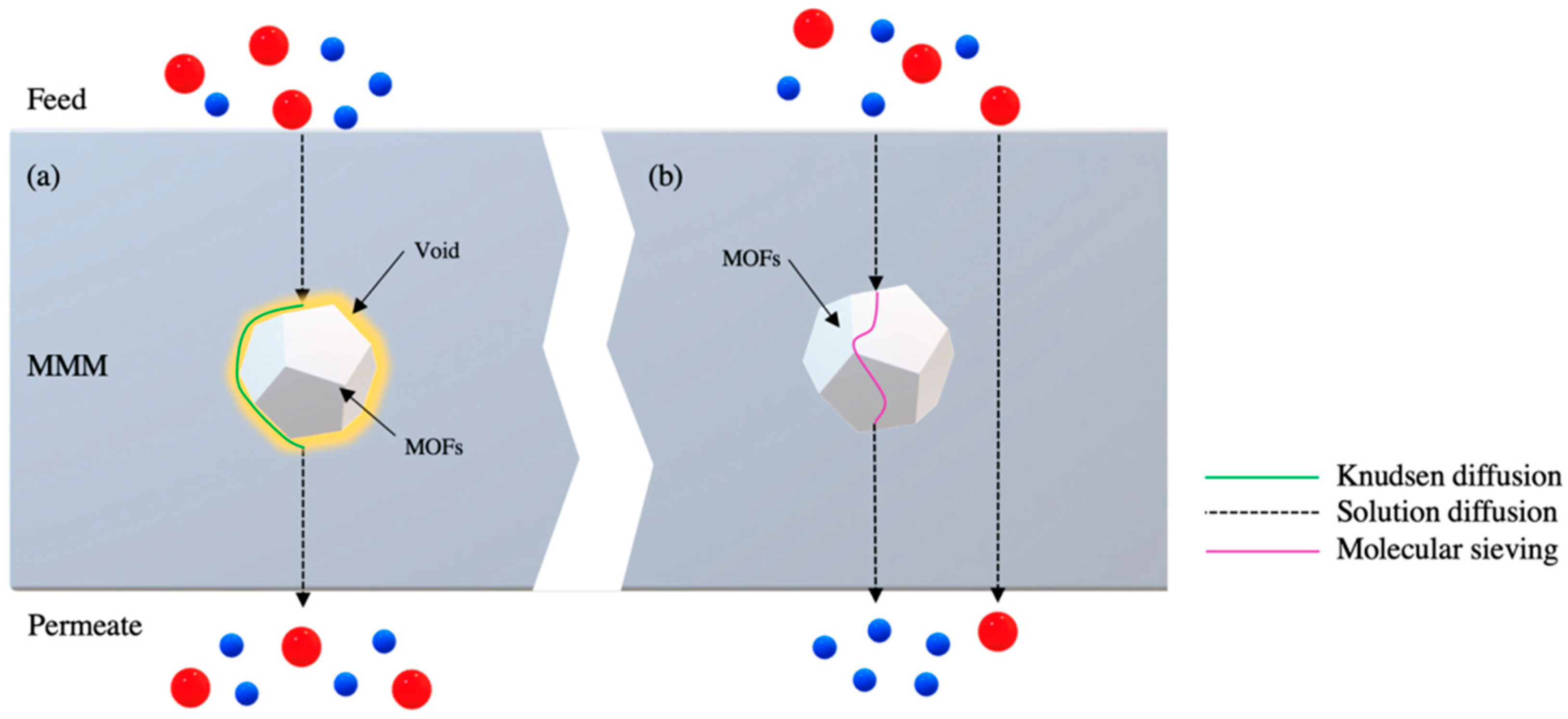

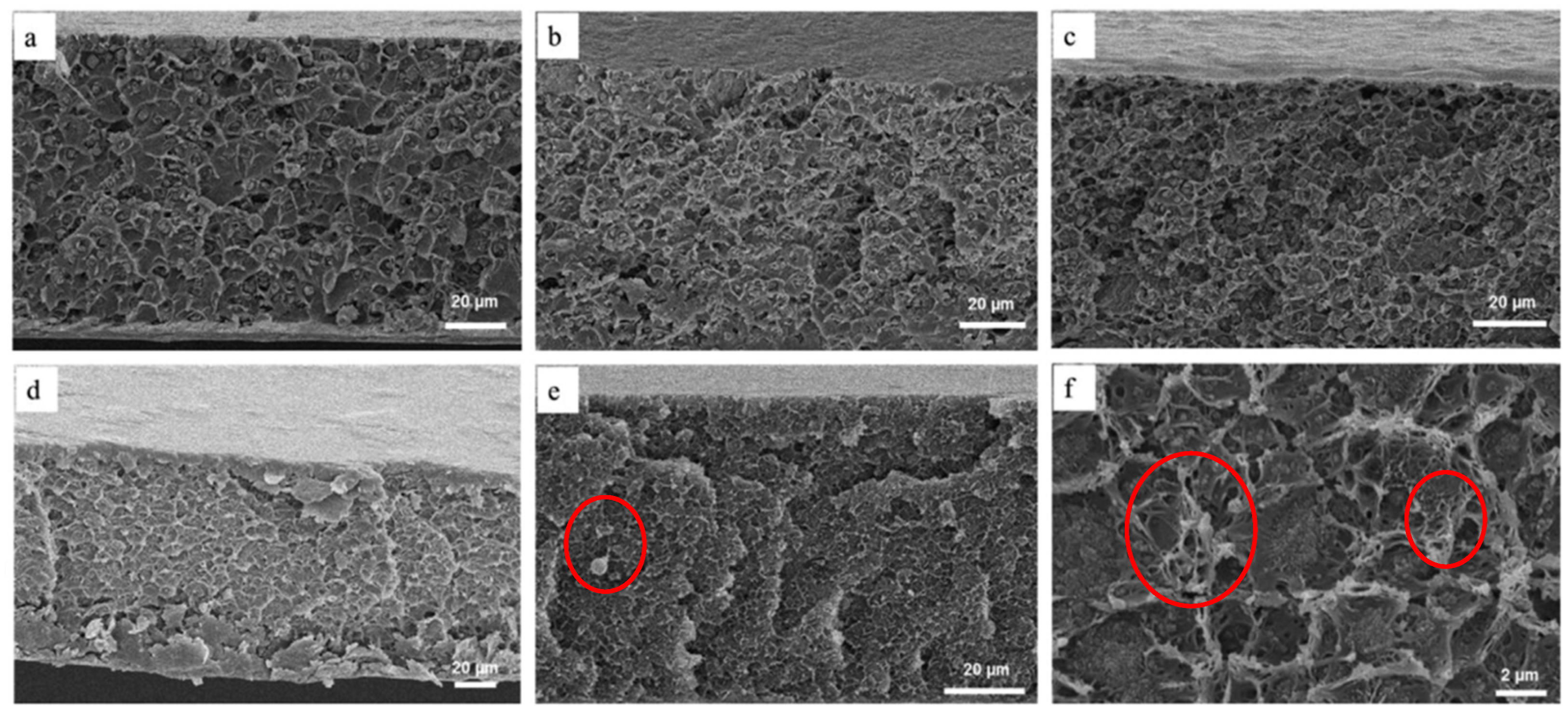



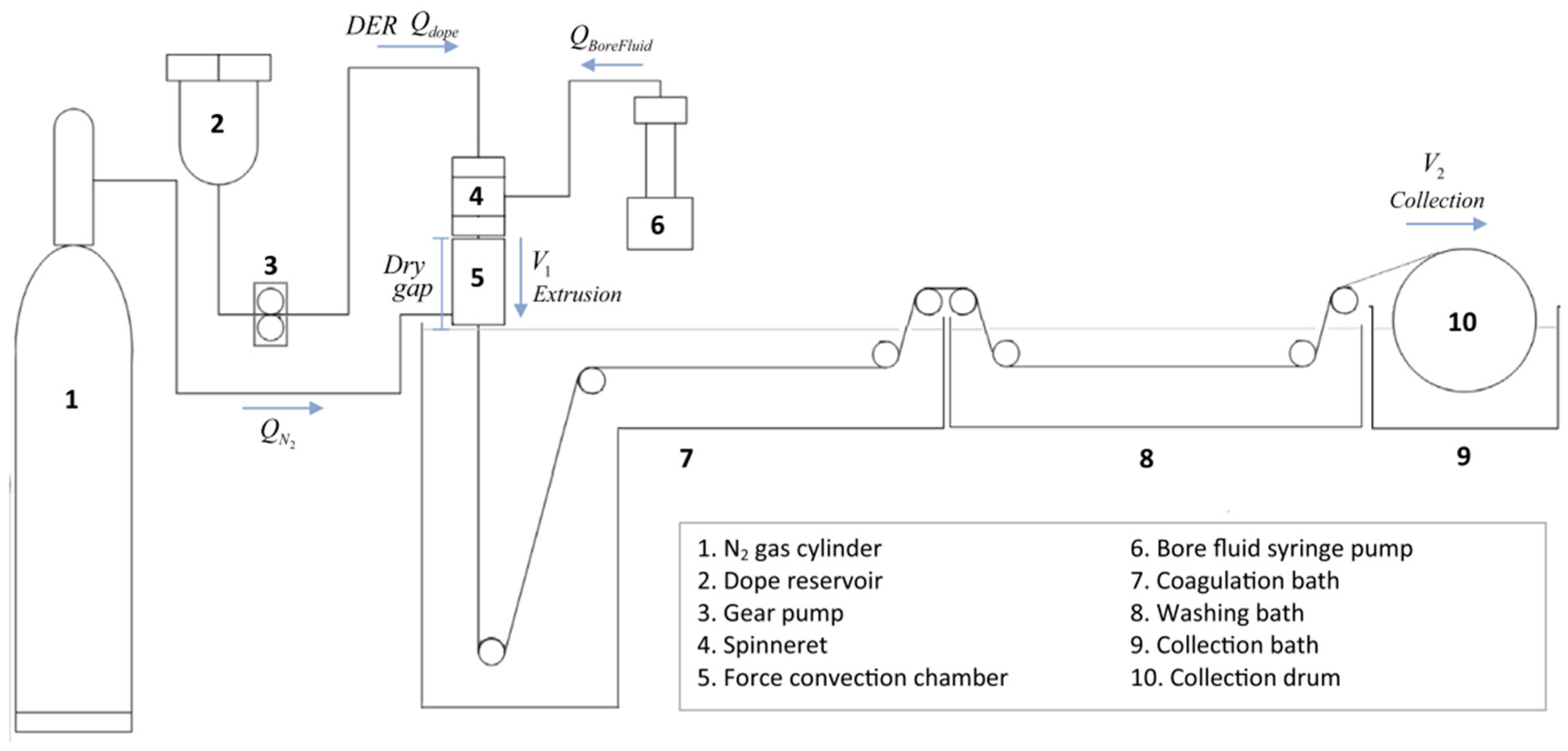

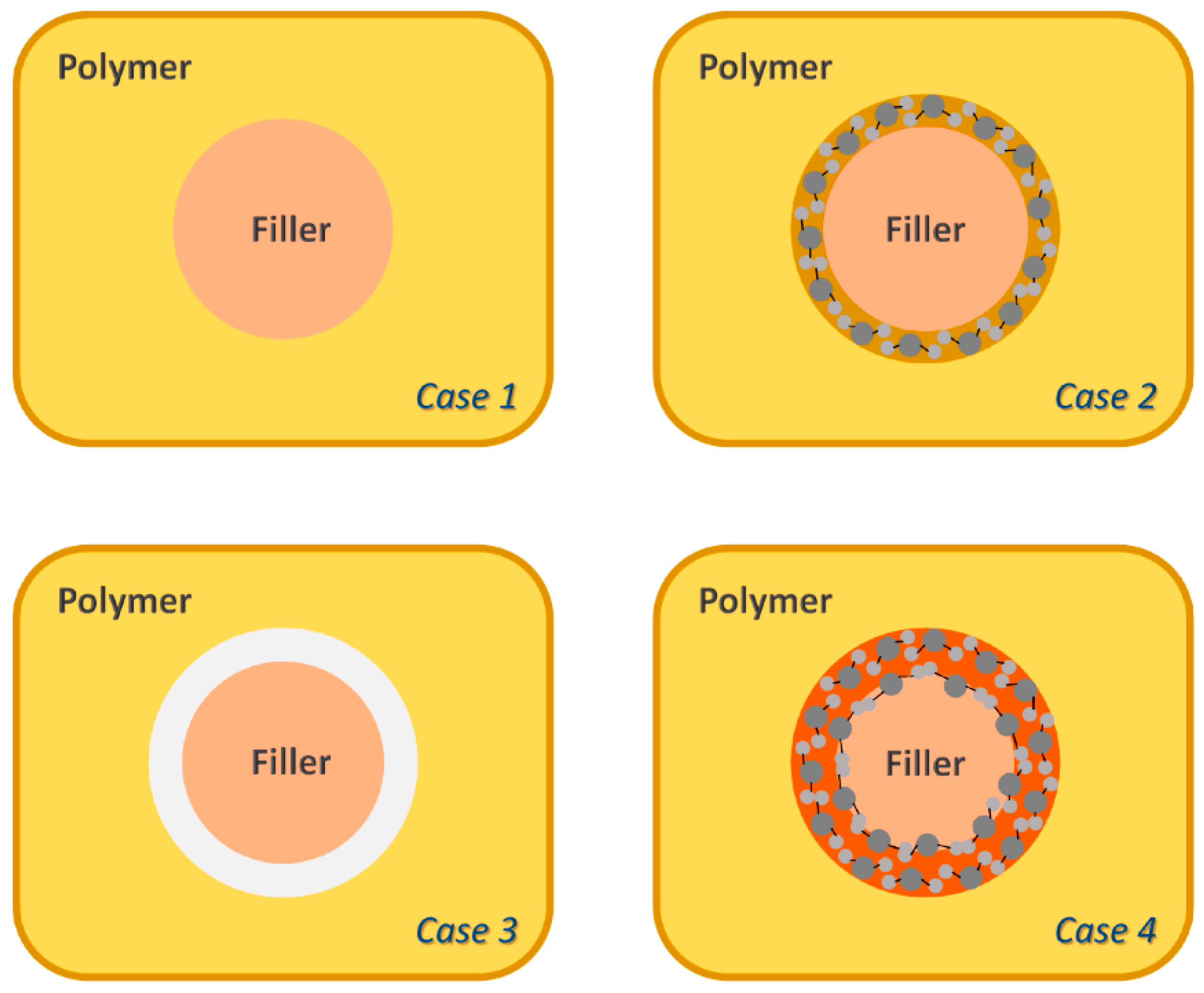

| Metal-Organic Framework | Pore Size | MOF Structure | Reference |
|---|---|---|---|
| UiO-66 | 6.2 Å | 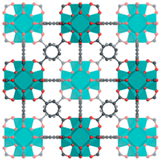 | Reprinted with permission from Refs. [32,62] |
| UiO-67 | 8.0 Å | 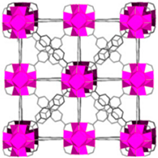 | [51,63] |
| MIL-53 (Al) | 8.5 Å | 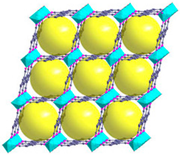 | [38,64] |
| MIL-101 (Cr) | 12 Å | 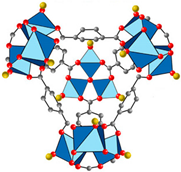 | [32,65] |
| MIL-125 (Ti) | 6 Å | 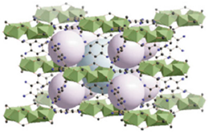 | [63] |
| ZIF-4 | 2.1 Å | 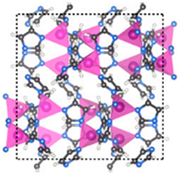 | [66] |
| ZIF-7 | 3.0–4.2 Å | 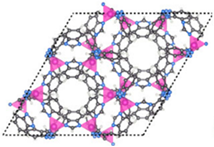 | [58,66] |
| ZIF-8 | 3.4–11.8 Å |  | [2,66] |
| Cu3(BTC)2 | 6 Å |  | [67,68] |
| Fe-BTC | 5.5–8.6 Å |  | [60,61] |
| Amine-Functionalized MOFs MMM | Operating Parameters | Performance | Reference | |||
|---|---|---|---|---|---|---|
| Filler | Polymer | Particle Loading (%) | Temperature (K)/Pressure (Bar) | CO2 Permeability (Barrer) | CO2/CH4 Selectivity | |
| ZIF-8 | 6FDA-durene | 5.0 | 298/3.5 | 693.5 | 16.5 | [41] |
| APTMS-ZIF-8 | 0.5 | 649.6 | 17.4 | [57] | ||
| AAPTMS-ZIF-8 | 0.5 | 825.1 | 26.2 | |||
| AEPTMS-ZIF-8 | 0.5 | 713.8 | 27.9 | |||
| APTMS-ZIF-8 | 1.0 | 518.3 | 13.5 | |||
| AAPTMS-ZIF-8 | 1.0 | 582.5 | 18.2 | |||
| AEPTMS-ZIF-8 | 1.0 | 561.6 | 15.0 | |||
| MIL-53 | PEBAX MH-1657 | 5.0 | 311.15/10.0 | 127.4 | 18.7 | [38] |
| 10.0 | 129.0 | 23.3 | ||||
| 15.0 | 105.4 | 17.4 | ||||
| 20.0 | 95.7 | 17.2 | ||||
| NH2-MIL-53 | 5.0 | 134.6 | 19.1 | |||
| 10.0 | 149.1 | 20.5 | ||||
| 15.0 | 125.6 | 20.6 | ||||
| 20.0 | 63.3 | 17.3 | ||||
| UiO-66 | 6FDA-DAM | 14.0 | 308/3.0 | 1700.0 | 31.0 | [84] |
| NH2-UiO-66 | 0.0 | 997.0 | 29.2 | |||
| 16.0 | 1223.0 | 30.0 | ||||
| NH2-MIL-125 (Ti) | 6FDA-durene | 0.0 | 298/3.5 | 510.3 | 8.6 | [80] |
| 1.0 | 922.8 | 23.0 | ||||
| 3.0 | 930.0 | 27.0 | ||||
| 5.0 | 1020.0 | 29.5 | ||||
| 7.0 | 1115.7 | 37.5 | ||||
| 9.0 | 961.8 | 31.0 | ||||
| NH2-ZIF-8 | PSF | 0.0 | 300/4.0 | 59.0 | 18.0 | [85] |
| 0.5 | 21.2 | 34.0 | ||||
| ZIF-8 | 6FDA-durene | 1.0 | 308/5.0 | 600.0 | 15.0 | [81] |
| ZIF-8-AAPTMS | 1.0 | 540.0 | 16.8 | |||
| ZIF-8-AEPTMS | 1.0 | 520.0 | 11.5 | |||
| NH2-MIL-125 (Ti) | PSf | 10.0 | 303/3.0 | 18.5 | 28.3 | [82] |
| 20.0 | 29.3 | 29.5 | ||||
| 30.0 | 40.0 | 29.2 | ||||
| 10.0 | 303/10.0 | 15.0 | 28.5 | |||
| 20.0 | 22.8 | 29.5 | ||||
| 30.0 | 36.8 | 5.7 | ||||
| - | 6FDA-ODA | - | 308/10.0 | 14.4 | 44.1 | [83] |
| UiO-66 | 25.0 | 50.4 | 46.1 | |||
| NH2-UiO-66 | 13.7 | 51.6 | ||||
| MOF-199 | 21.8 | 51.2 | ||||
| NH2-MOF-199 | 26.6 | 59.6 | ||||
| MIL-125 | Matrimid 9725 | 15.0 | 308/9.0 | 18.0 | 44.0 | [17] |
| 30.0 | 27.0 | 37.0 | ||||
| NH2-MIL-125 | 15.0 | 17.0 | 50.0 | |||
| 30.0 | 50.0 | 37.0 | ||||
| MIL-53 | 6FDA-ODA | 25.0 | 308/10.3 | 21.0 | 44.5 | [13] |
| NH2-MIL-53 | 25.0 | 14.5 | 66.0 | |||
| Amine-Functionalized HFMMM | Operating Parameter | Performance | Reference | |||
|---|---|---|---|---|---|---|
| Filler | Polymer | Loading (%) | Temperature (K)/Pressure (Bar) | CO2 Permeability (GPU) | CO2/CH4 Selectivity | |
| UiO-66 in PEBAX | PVDF | 50.0 | 298/2 | 220.0 | 16.0 | [37] |
| NH2-UiO-66 in PEBAX | 320.0 | 23.0 | ||||
| NH2-MIL-53 | CA | 15.0 | 303/3 | 2.9 | 11.8 | [99] |
| NH2-MIL-53 | CA | 15.0 | 298/3 | 6.7 | 16.0 | [100] |
| ZIF-8 | PSf | 0.5 | 303/4 | 31.0 | 15.6 | [72] |
| A@S/ZIF-8 | 41.2 | 22.3 | ||||
Publisher’s Note: MDPI stays neutral with regard to jurisdictional claims in published maps and institutional affiliations. |
© 2022 by the authors. Licensee MDPI, Basel, Switzerland. This article is an open access article distributed under the terms and conditions of the Creative Commons Attribution (CC BY) license (https://creativecommons.org/licenses/by/4.0/).
Share and Cite
Sunder, N.; Fong, Y.Y.; Bustam, M.A.; Suhaimi, N.H. Development of Amine-Functionalized Metal-Organic Frameworks Hollow Fiber Mixed Matrix Membranes for CO2 and CH4 Separation: A Review. Polymers 2022, 14, 1408. https://doi.org/10.3390/polym14071408
Sunder N, Fong YY, Bustam MA, Suhaimi NH. Development of Amine-Functionalized Metal-Organic Frameworks Hollow Fiber Mixed Matrix Membranes for CO2 and CH4 Separation: A Review. Polymers. 2022; 14(7):1408. https://doi.org/10.3390/polym14071408
Chicago/Turabian StyleSunder, Naveen, Yeong Yin Fong, Mohamad Azmi Bustam, and Nadia Hartini Suhaimi. 2022. "Development of Amine-Functionalized Metal-Organic Frameworks Hollow Fiber Mixed Matrix Membranes for CO2 and CH4 Separation: A Review" Polymers 14, no. 7: 1408. https://doi.org/10.3390/polym14071408
APA StyleSunder, N., Fong, Y. Y., Bustam, M. A., & Suhaimi, N. H. (2022). Development of Amine-Functionalized Metal-Organic Frameworks Hollow Fiber Mixed Matrix Membranes for CO2 and CH4 Separation: A Review. Polymers, 14(7), 1408. https://doi.org/10.3390/polym14071408





